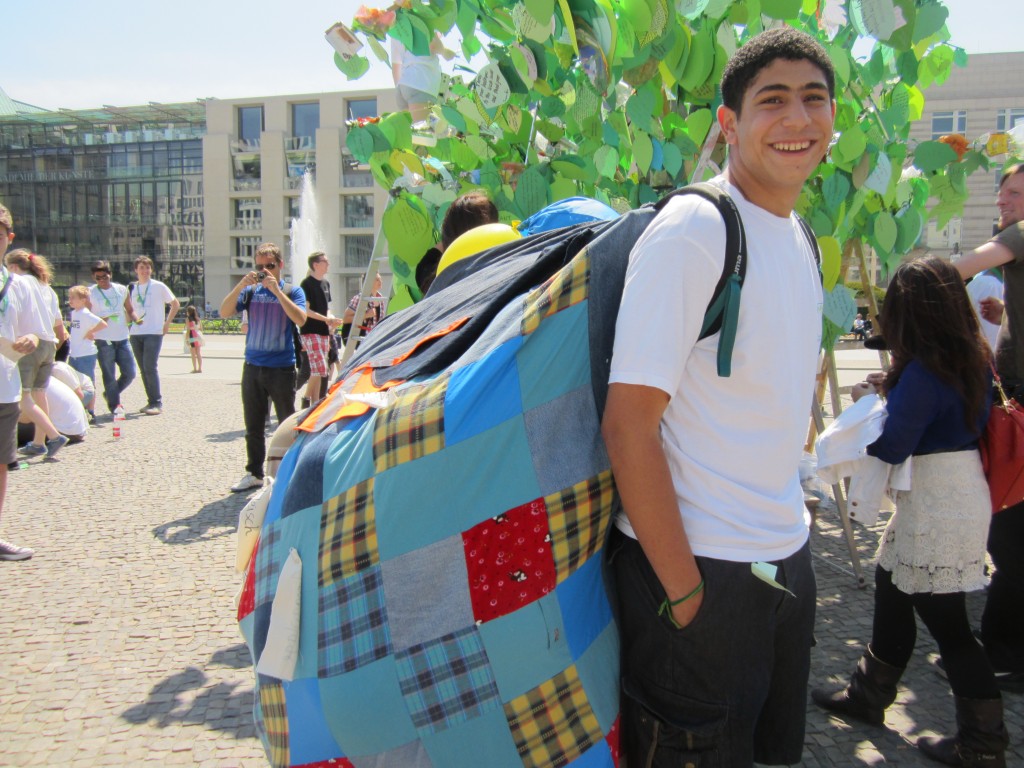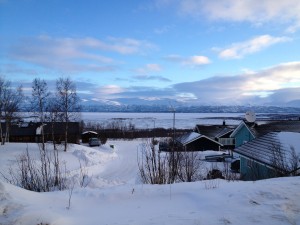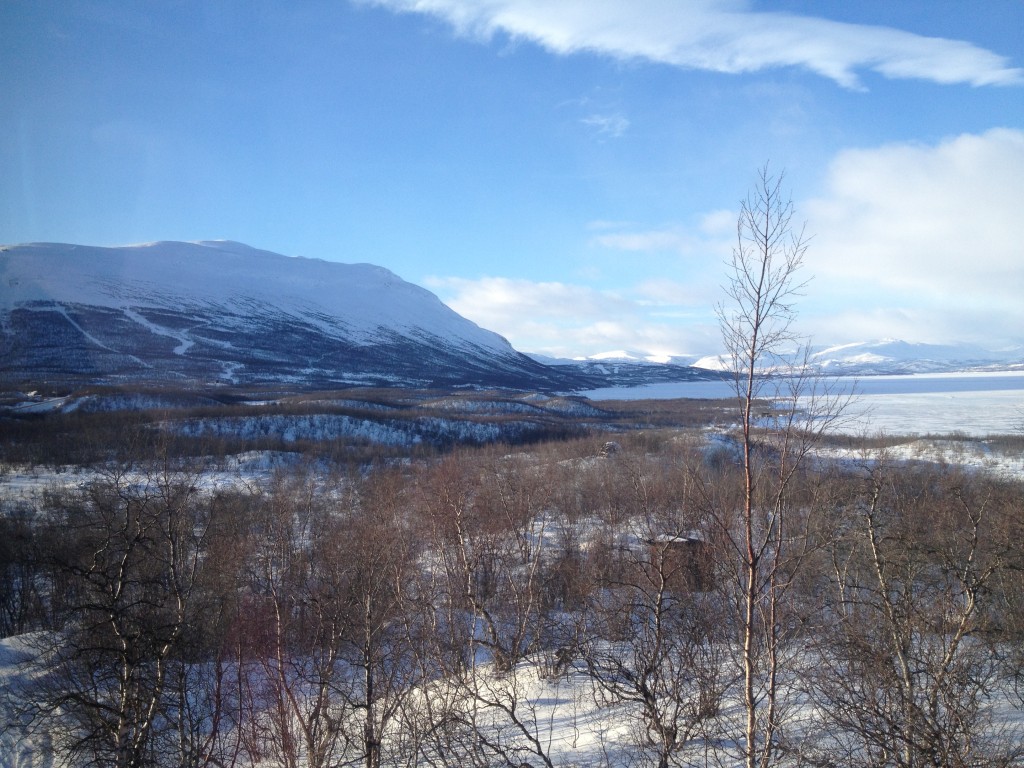Search Results for Tag: environment
A Song, a Dance and Spots on the Fight Against Climate Change
 Yesterday, the colossal efforts each and every one of us put in the project came to fruition as the pinnacle of our project, the 1st world youth sustainability summit, came to be.
Yesterday, the colossal efforts each and every one of us put in the project came to fruition as the pinnacle of our project, the 1st world youth sustainability summit, came to be.
The event, many of whose attendees were project managers and leading figures in their respective fields, were pleasantly surprised as the youthinkgreen teams that took part in the gala showed discipline, determination and that they were not to be discouraged by the sheer size and importance of the event at hand.
The program, whose highlights were the youthinkgreen rendition of the song ,,Mut zum Handeln” (courage to act), the various student-produced environmentally oriented spots, and the Indian dance showed the unique inter-cultural connection between the various members of the Youthinkgreen.
The excitement at the event rubbed off on each and every one of our guests, with many of them on the verge of euphoria. We were standing hand-in-hand with people whose success has come to be known on every continent of the planet and watched in amazement as they relaxed and spoke to us as peers, not as minors, as friends not as climate change fighters.
All in all, to simply call our summit a success would be an understatement. The Allianz Forum will forever in our hearts be remembered as the place where we graduated into adults, supported along our journey by the constant recognition we received throughout the process.
Written by Mourad Farahat, youthinkgreen Kairo
Handing over the „Tree of Hope“
 The „Tree of Hope“ had a long and fruitful journey. First we planet it at the climate summit in Doha in December 2012. And now it grew at the 1st World Youth Sustainability Summit 2013 in Berlin. The tree is actually not a real tree. It’s trunk is made from garbage and the crown from green paper leafs filled with the wishes, demands and ideas of people from all over the world.
The „Tree of Hope“ had a long and fruitful journey. First we planet it at the climate summit in Doha in December 2012. And now it grew at the 1st World Youth Sustainability Summit 2013 in Berlin. The tree is actually not a real tree. It’s trunk is made from garbage and the crown from green paper leafs filled with the wishes, demands and ideas of people from all over the world.
It’s a beautiful and complex tree, meant to be a demand against mankinds extravagantly and unecological lifestyle. People should see the tree, read the leafs and think about their own daily routines. All 160 participants of the Youth Sustainability Summit collected the wishes and demands from friends and siblings in the 31 countries they call home. The tree grew upto 4 meters yesterday at the Brandenburg Gate in the centre of Berlin. And it grew more leafs as citizens and tourists also started to write on leafs.
 Besides the „Tree of Hope“ we used a 10qm blanket to illustrate the ecological foot- and hand-print everybody has. The foot-print depends on the way people live and how they consume things. The hand-print shows that it’s possible to fight against climate change. So we asked people to leave a colourfull print of feed and hands on the white blanket. The action was a success, it ended with a gala at the Allianzforum (Read the post by Mourad Farahat) where a nice breeze shook the leafs of the trees.
Besides the „Tree of Hope“ we used a 10qm blanket to illustrate the ecological foot- and hand-print everybody has. The foot-print depends on the way people live and how they consume things. The hand-print shows that it’s possible to fight against climate change. So we asked people to leave a colourfull print of feed and hands on the white blanket. The action was a success, it ended with a gala at the Allianzforum (Read the post by Mourad Farahat) where a nice breeze shook the leafs of the trees.
The leafs are filled with all kinds of demands, as you can see on the pictures. The ideas and wishes very much depend on where the writer comes from. You can imagine that a person from a developing countries shares quite different hopes as someone from a industrialized country.
We hope that all our wishes and demands will come true. That’s more than important to leave our children and grandchildren a world that is worth living. The way we live today destroys the future. I personally want to live in a world where nature has a more important role again and not only profit. I wish for more green spaces in cities, more room for bicycles and children to play. The „Tree of Hope“ is now in the hands of the German Environmental Minister Peter Altmaier. We hope for results.
Written by Anke Britta Schmidt, youthinkgreen Osnabrück /ke
1st World Youth Sustainability Summit 2013 in Berlin
Young people from all over the world are in Berlin today to take part in the first World Youth Sustainability Summit. The conference is organized by youthinkgreen, an international organization that brings together young folks from 11 different countries, such as Egypt, Brazil, China, India or Germany. They all come from diverse cultural, religious and social backgrounds. The idea behind youthinkgreen is to train the youngsters to become climate ambassadors. They’re meant to use their knowledge to set up and support sustainability projects in the countries they come from.

The Berlin-based organization has some prominent supporters – German Chancellor, Dr. Angela Merkel and UNFCCC Executive Secretary Christiana Figueres and the president of the European Parliament, Dr. Hans-Gert Pöttering.
Over the next ten days, many of the youthinkgreen network’s members will be in Berlin to get in touch with politicians, scientists and residents of the German capital to discuss future challenges.
Youth and Sustainability in Everday Life – Challenge, Rethink and Revive Global Ways of Living
The conference will kick off later today at the Mercator Foundation in Berlin, followed by workshops, speeches and excursions until May 20th. The participants are to visit Berlin’s rubbish collection and sanitation department BSR and popular urban gardening site Prinzessinnengarten. At the Brandenburg Gate, youthinkgreen plans to approach residents and tourists while planting the so called “Tree Of Hope,” an idea that Global Ideas followed during the last Climate Summit in Doha, Qatar in December 2012.
The most urgent questions for youthinkgreen are: what kind of a lifestyle do you support for today, tomorrow, the future? In which aspects are politics, economy and civil society responsible for the organisation of a humane life? Doesn’t the wish for a future socially and ecologically secured belong to the catalogue of human rights?
The result of the summit will be a common position paper written by the participants on “Youth and Sustainability in Everyday Life – Challenge, Rethink and Revive Global Ways of Living.”
You can follow youthinkgreen on facebook and twitter. We’ll come back to the World Youth Sustainability Summit with some young voices from the conference, later this week. Participants will write about their experiences, feelings and the results of the conference.
Earth Day 2013 – the day google releases the tiny bears
Today is Earth Day, a day to raise the awarness for climate protection and to make clear we don’t have a backup-earth waiting in the cellar if we have wasted this one. The Earth Day movement is has quite a long tradition, this year it’s 43 years old, a milestone Google dedicates one of it’s occasional doodles.
Also these dedications have a long tradition, starting with two aliens looking at our planet in 2003 over melting polar ice in 2007 up to animated flowers in 2012.
This year’s the design is more elaborate. You will see a scene of hills with snow-capped mountains and a lake teeming with fish, bears peeping out caves, rain falling from clouds if you click them. It’s playfull, cute and may work as a mind-opening tool to make sure everyone knows what gem we live on.
Google has started a few efforts lately to support a greener environment. It’s funded renewable energy projects and published its carbon footprint for the first time.
Earth Day was born in the US in 1970. It’s idea is to activate “individuals and organizations to strengthen the collective fight against man’s exploitive relationship with the planet.”
Earth Day was born in the US in 1969, presented as a concept at the UNESCO conference in San Francisco. It’s idea was and still is to activate “individuals and organizations to strengthen the collective fight against man’s exploitive relationship with the planet.”
At the same time Gaylord Nelson U.S. Senator from Wisconsin back then thought about a national day of the environment after witnessing the ravages of the 1969 massive oil spill in Santa Barbara, California. The idea became popular, so since 1970 “Earth Day“ became a regular and steady growing event. During the 1990s the day crossed borders and became what it is today, a worldwide supported day in honor of the earth.
Exploring the North – Visible signs of climate change
Almost in the middle of nowhere, where just a few houses stand between trees around the lake, there is kind of a research nest. Scientists from different countries live and work together in Abisko, Sweden, to investigate the impact of climate change in the Arctic region.
That is especially feasible, as the research station is located North of the polar circle. The Arctic region is far more sensitive to climate change than others: While globel mean temperature yet rose by 0.8 degrees celsius, the Arctic already warmed by more than one degree on average.
“If you came here 40 or 50 years ago, you would see that the treeline has risen since then”, says plant ecologist Ann Milbau.
Also the composition of species growing here has changed: mosses do worse, while more grasses growing on the vast ground. But in the last years, researchers suddenly walked on a green moving carpet – made of caterpillars. Temperature in the previous winter did not fall below -35°C, a threshold above which all caterpillar eggs survive. The eclosed moths ate away all leaves from the trees. “There was nothin green here in summer”, Milbau says, “But yet we don’t know, whether this was just an exception or really a sign of climate change.”
Which visible signs of climate change can you see in your environment?










Feedback